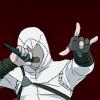Sign in to follow this
Followers
0

Review: The Legend of Zelda: Twilight Princess
Started by
Joshawott,
-
Recently Browsing 0 members
No registered users viewing this page.

Started by
Joshawott,
No registered users viewing this page.